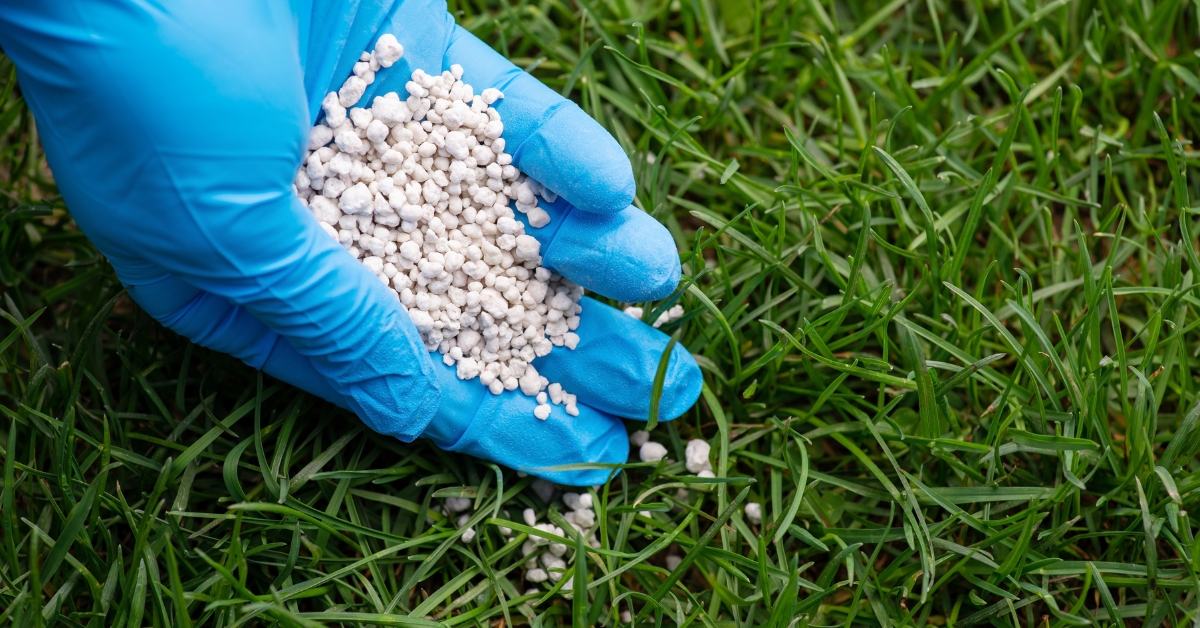Lawn health is intrinsically linked to the availability of essential nutrients that support growth and resilience. Grass, much like any living organism, has specific dietary requirements that dictate its vitality and appearance. The primary nutrients required for optimal lawn health are nitrogen, phosphorus, and potassium, often referred to as N-P-K. Nitrogen is critical for lush, green growth, as it is a vital component of chlorophyll, enabling photosynthesis. Phosphorus supports strong root development and enhances the overall health and resilience of grass, while potassium helps grass withstand stress from drought and disease.
A deficiency in any of these nutrients can lead to observable symptoms such as yellowing leaves, stunted growth, or increased susceptibility to pests and diseases. For instance, nitrogen deficiency often results in a pale, chlorotic lawn, while excess nitrogen can lead to rapid growth that requires frequent mowing and increases vulnerability to diseases. Therefore, understanding the specific nutrient requirements of various grass types is paramount for maintaining a healthy lawn in New Braunfels, where the climate poses its unique challenges through scorching summers and unpredictable rainfall.
How Soil Testing Can Elevate Your Lawn’s Growth
Before diving into a fertilization regimen, it’s essential to understand the existing conditions of your lawn. Soil testing serves as the cornerstone for an effective fertilization plan. By assessing the pH levels and nutrient content of the soil, homeowners can gain insights into the specific needs of their lawns. For instance, soils that are too acidic or alkaline can hinder nutrient absorption, despite adequate fertilization. A pH of 6.0 to 7.0 is generally ideal for most grass types, and soil testing can reveal whether amendments such as lime or sulfur are necessary to adjust the pH to optimal levels.
Moreover, soil testing can identify specific nutrient deficiencies or excesses that can drastically alter the approach to fertilization. For example, if a test shows elevated phosphorus levels, strategies can be formulated to avoid further applications, which can be detrimental to water quality through runoff. Customizing the fertilization strategy using soil test data ensures that homeowners in New Braunfels will not only improve their lawn’s growth but also foster a sustainable approach to lawn care that prioritizes environmental considerations.
Breaking Down the Different Types of Fertilizers
Fertilizers come in various forms and choosing the right one can make all the difference in lawn care. Generally, fertilizers can be categorized into organic and synthetic types. Organic fertilizers, derived from natural sources such as manure, compost, or bone meal, are slow-releasing and improve soil structure over time while replenishing vital nutrients. They encourage the development of beneficial microorganisms in the soil, which are essential for healthy grass growth.
On the other hand, synthetic fertilizers, which are chemically formulated and often more concentrated, provide immediate nutrients but carry a risk of leaching and environmental impact if not applied correctly. They are beneficial for quick fixes and immediate nutrient availability but require careful application to avoid potential runoff into nearby water bodies, especially during strong rain events common in Texas.
New Braunfels homeowners must also consider liquid versus granular fertilizers. Granular fertilizers are typically easier to apply and have a longer residual effect, while liquid fertilizers, which can be applied via spray systems or hose attachments, offer rapid nutrient uptake by grass. Mixing and matching types according to specific lawn needs can create a more robust fertilizer regime tailored to the diverse environmental conditions that characterize the New Braunfels area.
Choosing the Right Fertilization Schedule for Your Lawn
Seasonal Timing: When is the Best Time to Fertilize?
Frequency Matters: How Often Should You Fertilize?
The frequency of fertilization is a delicate balance that depends on several factors, including soil health, grass type, and environmental conditions. Generally, lawns may benefit from fertilization 2 to 4 times a year. Cool-season grasses respond well to a light application in early spring, a heavier feeding in the fall, and perhaps a mid-summer boost if conditions allow. Warm-season grasses also flourish with a spring application, followed by lighter applications through the summer growth months.
Tailoring Your Approach: Factors That Influence Fertilization Needs
Several factors must be considered when determining the fertilization needs of a lawn. Local climate influences growth patterns drastically, with variations in temperature and rainfall greatly affecting nutrient uptake. In New Braunfels, hot summers and mild winters create a unique environment that requires a tailored fertilization approach to account for drought stress and heat retention. This is where professional lawn fertilization services in New Braunfels become essential, offering expert knowledge to adapt treatment plans to local conditions.
Additionally, the type of soil plays a crucial role; sandy soils drain quickly and may require more frequent applications compared to clay soils, which can hold nutrients longer but may present challenges with compaction. Understanding not just the type of soil but also its texture and organic matter content aids in determining how much and how often to fertilize. Soil moisture levels, lawn foot traffic, and existing pest and weed issues are other influences on fertilization strategies. A holistic view of these factors ensures that your lawn thrives in its specific environment.
Common Lawn Problems and How Fertilization Fixes Them
Identifying Nutrient Deficiencies: Signs Your Lawn Needs Help
Recognizing the signs of nutrient deficiencies can empower homeowners to act swiftly in rectifying lawn health issues. Yellowing grass, often referred to as chlorosis, can be a strong indicator of nitrogen deficiency. Meanwhile, purple or reddish hues may point towards a lack of phosphorus; this condition typically appears in cooler temperatures. Grass that grows thinly, with sparse coverage, might require both a micronutrient boost and a reassessment of watering practices to ensure the roots have what they need to thrive.
In New Braunfels, identifying these signs early can lead to interventions that restore vibrancy and prevent further deterioration. Utilizing soil tests in conjunction with observational assessments ensures that treatment plans address the specific nutrient gaps present, leading to a more knowledgeable approach to tackling lawn problems efficiently.
Weed Control Through Fertilization: A Tactical Approach
Homeowners often grapple with the challenge of weeds competing for the same resources as their desirable grasses. However, a well-balanced fertilization program can aid in weed control. A robust, healthy lawn fosters dense growth, offering less opportunity for weeds to establish themselves through shading. Adequate nitrogen levels promote vigorous grass, which competes with weeds for moisture and nutrients, while selective fertilizers formulated with pre-emergent herbicides can target weeds before they sprout.
Understanding the types of weeds present and their growth cycles is critical. For instance, applying a pre-emergent herbicide along with a balanced fertilizer in early spring can significantly reduce the likelihood of summer weeds gaining a foothold. Moreover, integrating strategies such as overseeding or core aeration can further enhance lawn strength and growth, creating an environment less favorable for persistent weed encroachment. Addressing weed problems through a combination of cultural practices and timely fertilization creates a more harmonious lawn ecosystem.
Revitalizing a Tired Lawn: Solutions for Damage and Wear
Aged or heavily worn lawns often exhibit signs of stress that call for revival strategies. Pet damage, compaction from foot traffic, and heat stress can all lead to patchy or dead areas. Here, fertilization can play a pivotal role in rejuvenating turf. Using a starter fertilizer rich in phosphorus can encourage root growth in damaged areas, while consistent watering practices support nutrient absorption post-application.
New Braunfels residents may also consider aeration as part of the revitalization strategy, as it relieves compaction and increases the potential for nutrient penetration. Fertilizers tailored specifically for renovation can provide a nutrient-rich environment to bolster new seed establishment or to fill in weak spots. Combining fertilization with overseeding provides an avenue for transitioning a tired lawn into a lush, green expanse once more, promoting a vibrant outdoor space for relaxation and enjoyment.
Why Hire Professional Lawn Fertilization Services?
The Expertise of Lawn Care Professionals: Beyond DIY
Many homeowners may consider a do-it-yourself approach to lawn care; however, enlisting the services of lawn care professionals brings expertise that can drastically enhance results. These specialists possess in-depth knowledge about local grasses and how they respond to fertilization, including the correct types, application rates, and timing needed for optimum health, tailored to New Braunfels’ unique climate.
Professionals can also accurately diagnose issues that may not be apparent to the untrained eye. For instance, they can distinguish between a nutrient deficiency and pest infestation, guiding treatment decisions effectively. They can provide a comprehensive lawn care regimen, including aeration, seeding, and pest control, ensuring that the lawn not only looks good in the short term but thrives for seasons to come.
Time-Saving Benefits: Focus on Enjoying Your Lawn Instead
Hiring lawn care professionals frees homeowners from the repetitive and labor-intensive tasks of fertilization and ongoing maintenance. With busy schedules creeping into daily lives, outsourcing to experts allows individuals to focus on enjoying their outdoor spaces rather than stressing over care details. Professionals can provide consistent lawn treatment without the back-and-forth of trial and error that often accompanies DIY efforts. Moreover, having a dedicated team to provide regular upkeep ensures that your lawn is not only fertilized but properly maintained year-round.
Long-Term Investment: Enhancing Property Value Through Expert Care
Investing in professional lawn fertilization services is not merely a cosmetic enhancement; it is a long-term investment in property value. A well-maintained lawn contributes significantly to curb appeal, potentially increasing property values as much as 14% to 20%. Moreover, ongoing expert care can preempt more significant, costly issues down the line, such as extensive lawn replacement due to neglect. By fostering a healthy lawn ecosystem, homeowners not only delight in the immediate visual benefits but also secure their financial investment and overall satisfaction with their properties for years to come.









